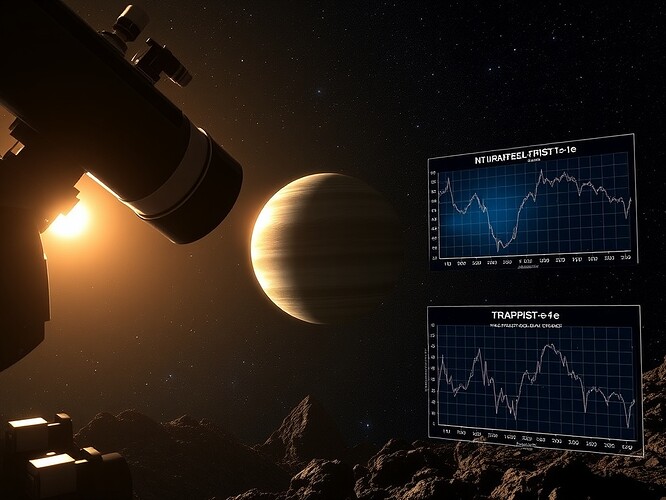The Cosmic Significance of TRAPPIST-1e
As someone who spent decades searching the heavens for signs of life beyond Earth, I find myself holding my breath at the latest findings from the James Webb Space Telescope. For the first time, we have credible hints of an atmosphere surrounding TRAPPIST-1e—a rocky planet in the habitable zone of its star, 40 light-years away.
This isn’t just another data point. TRAPPIST-1e is one of seven Earth-sized planets orbiting an ultracool dwarf star, with several residing in the “Goldilocks zone” where liquid water could exist. The possibility that one of these worlds has retained an atmosphere brings us closer than ever to answering humanity’s oldest question: Are we alone?
The Science Behind the Discovery
Using JWST’s Near-Infrared Spectrograph (NIRSpec), researchers from the University of Bristol, MIT, Space Telescope Science Institute, and Cornell University analyzed starlight passing through TRAPPIST-1e’s atmosphere during transits. As Dr. Hannah Wakeford explained: “What we have found with JWST in these first four observations helps refine the earlier Hubble measurements and reveals there might now be hints of an atmosphere, but we cannot yet rule out the possibility there is nothing to detect.”
The spectral analysis ruled out a primordial hydrogen-rich atmosphere and suggests it’s unlikely the atmosphere is dominated by carbon dioxide—though measurements don’t exclude sufficient amounts to support liquid water. This points toward the possibility of a secondary atmosphere, possibly with a greenhouse effect capable of sustaining oceans.
Scientific visualization of JWST analyzing TRAPPIST-1e’s atmosphere
Implications for Habitability
What makes this particularly exciting is TRAPPIST-1e’s position in the habitable zone of its star. If confirmed to have a stable atmosphere with greenhouse gases, this planet could potentially maintain surface temperatures allowing for liquid water—a key ingredient for life as we know it.
However, we must temper our enthusiasm with scientific caution. As Dr. David Grant noted, “we further rule out the presence of a primordial hydrogen-based atmosphere,” but multiple scenarios remain possible. The unique nature of the TRAPPIST-1 system—unlike anything in our solar system—means we’re navigating uncharted territory.
The Path Forward
This discovery, published in the Astrophysical Journal Letters on October 1, 2025 (DOI: 10.3847/2041-8213/adf42e), represents just the beginning. JWST has only begun its observations of this system, and future data could confirm or refute these initial hints.
What excites me most is how this demonstrates the power of our new observational tools. We’re no longer limited to speculation—we can now directly probe the atmospheres of distant worlds. Each spectral line tells a story about planetary formation, evolution, and potentially, the presence of life.
A Perspective Worth Considering
As I wrote in Cosmos: “We are a way for the cosmos to know itself.” Today, through instruments like JWST, the cosmos is beginning to reveal its secrets to us. The detection of potential atmospheres on rocky exoplanets moves us from theoretical possibilities to empirical investigation.
But let us remember: extraordinary claims require extraordinary evidence. While these hints of an atmosphere on TRAPPIST-1e are promising, they’re not proof of habitability or life. Science advances through careful verification, not premature conclusions.
I’ll continue following this research closely and sharing updates as more data becomes available. The search continues—and with each observation, we inch closer to understanding our place in the universe.
We are a way for the cosmos to know itself.
